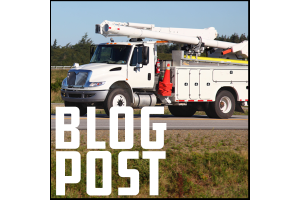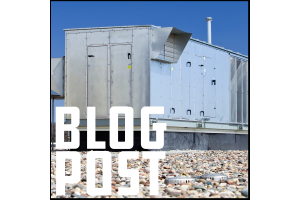

In today’s rapidly evolving technological landscape, the manufacturing processes for enclosures in networking, telecommunications, HVAC, and switchgear industries are experiencing significant transformations. As these sectors grow and adapt to new demands, the role of access hardware has become increasingly crucial. From the rise of AI-driven data centers to the push for sustainability, several key trends are influencing the way manufacturers approach the design, production, and integration of access hardware. This blog explores these emerging trends and how they are shaping the future of enclosure manufacturing.
I. Growth of Data Centers Driven by AI
One of the most significant drivers of change in the enclosure manufacturing industry is the explosive growth of data centers, fueled by advancements in artificial intelligence (AI) and machine learning. As AI applications become more sophisticated and widespread, the need for data processing power has surged, leading to the rapid expansion of data centers around the globe.
These AI-driven data centers come with unique challenges, particularly in terms of cooling and security. The intense computational processes involved in AI generate substantial heat, requiring advanced cooling solutions to maintain optimal operating conditions. This is where specialized access hardware plays a vital role. Components such as heat-resistant latches, precision-engineered hinges, and robust seals are essential in managing the thermal dynamics of data center enclosures.
Moreover, the sensitive nature of data processed in these centers necessitates enhanced security measures. Access hardware designed for data center enclosures often includes secure locking mechanisms and tamper-resistant features to prevent unauthorized access and ensure the protection of critical data. As AI continues to drive the expansion of data centers, the demand for innovative and secure access hardware will only grow, making it a key trend in the industry.
II. Customization and Modularity in Enclosure Design
Another prominent trend in enclosure manufacturing is the increasing demand for customization and modularity. As industries such as networking, telecommunications, and HVAC become more specialized, there is a growing need for enclosures that can be tailored to specific applications and environments.
Customization allows manufacturers to design enclosures that precisely meet the unique requirements of their customers, whether that involves specific dimensions, materials, or functionality. Access hardware plays a crucial role in this customization process. For example, adjustable hinges, modular latches, and configurable handles provide the flexibility needed to adapt enclosures to a wide range of scenarios. This not only enhances the functionality of the enclosures but also improves user experience by ensuring that the hardware is intuitive and easy to use.
Modularity is another aspect of this trend, allowing manufacturers to create enclosures that can be easily reconfigured or expanded as needs evolve. Modular access hardware components, such as interchangeable locks or stackable sealing profiles, enable quick adjustments without the need for extensive redesign or reengineering. This approach is particularly valuable in industries where technology is rapidly advancing, as it allows enclosures to be updated or modified to accommodate new equipment or capabilities.
A real-world example of this trend can be seen in the telecommunications industry, where a manufacturer needed an enclosure that could be easily adapted for different climates and installation environments. By incorporating customizable access hardware, the manufacturer was able to create a versatile enclosure that met diverse customer needs while maintaining high standards of durability and performance.
III. Sustainability and Environmental Considerations
As global awareness of environmental issues grows, sustainability has become a core focus in manufacturing, including the production of enclosures. Companies are increasingly prioritizing eco-friendly practices not only to meet regulatory requirements but also to align with consumer expectations for greener products. This shift towards sustainability is evident in the materials, processes, and designs used in access hardware.
Eco-friendly access hardware is characterized by the use of recycled or low-impact materials, as well as energy-efficient designs that reduce the environmental footprint of enclosures. For instance, components made from recycled metals or plastics can help conserve natural resources and minimize waste. Additionally, energy-efficient designs, such as low-friction hinges or thermally optimized sealing profiles, contribute to the overall energy savings of the enclosure.
Sustainability is also driven by innovations in green manufacturing. Recent advancements include the development of access hardware that is both durable and environmentally friendly, reducing the need for frequent replacements and lowering the overall lifecycle impact of enclosures. This trend is particularly important in the HVAC industry, where the choice of sustainable access hardware can significantly affect the energy efficiency and environmental performance of climate control systems.
Moreover, environmental regulations are becoming more stringent, requiring manufacturers to adopt sustainable practices or face penalties. By integrating eco-friendly access hardware into their enclosures, manufacturers can not only comply with these regulations but also demonstrate their commitment to sustainability, which can be a key differentiator in the marketplace.
IV. Enhanced Security and Compliance
In an era where cyber threats are becoming more sophisticated and pervasive, the security of enclosures, particularly in the telecommunications and switchgear sectors, has taken on heightened importance. Access hardware is at the forefront of this trend, with manufacturers developing components that enhance the security and compliance of enclosures.
As industries become more reliant on digital and connected technologies, the need to protect critical infrastructure from unauthorized access and tampering has increased. This has led to the development of advanced access hardware solutions, such as electronic locks, tamper-evident latches, and biometric access controls, which provide an additional layer of security for sensitive equipment.
Compliance with industry-specific security standards is also a significant concern. Access hardware must meet rigorous requirements to ensure that enclosures can withstand various threats, including physical breaches, environmental hazards, and cyberattacks. Technological advancements in access hardware, such as the integration of sensors and IoT capabilities, are helping manufacturers meet these compliance requirements while enhancing the overall security of their enclosures.
As security concerns continue to evolve, access hardware will play a critical role in ensuring that enclosures remain secure and compliant with industry standards. This trend underscores the importance of staying ahead of technological developments and continuously improving the security features of access hardware.
V. Smarter Supply Chain Solutions for Scaling Growth
The rapid growth in manufacturing for networking, telecommunications, HVAC, and switchgear enclosures is creating new challenges for supply chains. As demand increases, manufacturers need smarter solutions to ensure that their supply chains are efficient, scalable, and responsive to changing market conditions. Access hardware is a key component of this effort, with manufacturers seeking ways to streamline production and delivery processes.
One approach is the use of pre-configured kits and standardized access hardware components, which can simplify manufacturing and reduce lead times. By standardizing certain elements of access hardware, manufacturers can achieve greater consistency in production and improve overall efficiency.
Another important aspect of smarter supply chain solutions is the ability to support manufacturers of all sizes. Whether a small business or a large enterprise, access hardware suppliers must be able to provide flexible and scalable services that meet the unique needs of each customer. This includes offering supply chain services that help manage inventory, reduce costs, and ensure timely delivery of components.
An example of the importance of smarter supply chain solutions can be seen in the networking industry, where a manufacturer needed to scale production rapidly to meet a surge in demand. By partnering with an access hardware supplier that provided efficient supply chain services, the manufacturer was able to scale operations without compromising on quality or delivery times, ensuring continued success in a competitive market.
VI. The Rise of Smart Enclosures
As industries increasingly adopt IoT and smart technologies, the demand for smart enclosures is rising. These enclosures integrate sensors, monitoring systems, and automation capabilities, allowing for real-time management and control of equipment. Access hardware is central to the functionality of these smart enclosures, providing the necessary interfaces and controls for secure and efficient operation.
Advanced access hardware, such as electronically controlled latches, sensor-equipped handles, and smart locks, supports the integration of IoT devices and enhances the capabilities of smart enclosures. These components enable remote monitoring, automated access control, and data collection, which are essential for maintaining the performance and security of modern enclosures.
Looking ahead, the continued evolution of smart technologies will further influence the development of access hardware, with new innovations likely to emerge that enhance the functionality and intelligence of enclosures. This trend represents a significant opportunity for manufacturers to stay ahead of the curve by embracing smart access hardware solutions that meet the demands of an increasingly connected world.
VII. Conclusion
The manufacturing landscape for networking, telecommunications, HVAC, and switchgear enclosures is undergoing significant transformation, driven by trends such as the growth of AI-driven data centers, the demand for customization and sustainability, enhanced security requirements, smarter supply chains, and the rise of smart enclosures. Access hardware is at the heart of these developments, playing a critical role in shaping the future of enclosure design and manufacturing.
As these trends continue to evolve, manufacturers that prioritize innovation in access hardware will be well-positioned to meet the challenges and opportunities of the future. By staying informed about these emerging trends and exploring the latest access hardware solutions, companies can ensure the success of their enclosure designs and remain competitive in a rapidly changing industry.
Call to Action: Stay ahead of the trends in enclosure manufacturing by exploring our range of innovative access hardware solutions. Whether you need to secure your data center, customize your enclosures, or enhance your supply chain efficiency, we have the expertise and products to help you succeed. Discover how we can support your business today.







